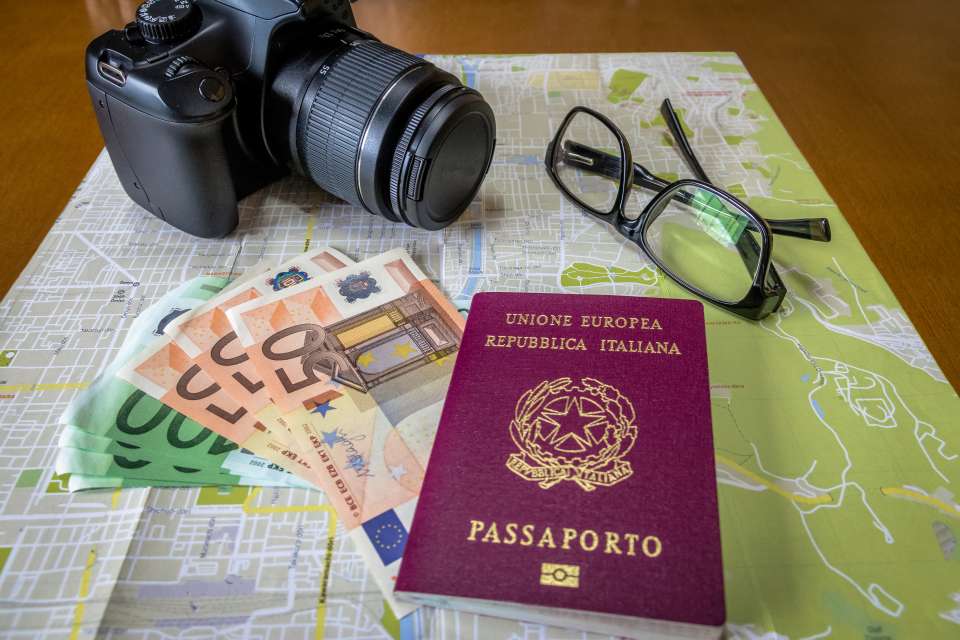Thursday, 28 August 2025
How to immigrate to Italy: a step-by-step guide
Moving to Italy is more than a change of address, it’s a commitment to understanding a new system, culture, and rhythm of life. Whether you’re drawn by professional opportunity, personal heritage, or simply the pace of Italian living, this guide offers a strategic framework for navigating Italian immigration. Rather than treating bureaucracy as a hurdle, we’ll show you how to work with it, explaining the rules, choices, and logic behind each phase of the process.
I. Planning your move to Italy
Moving to Italy begins long before you purchase a ticket. The pre-arrival phase is where you make strategic choices: understanding your eligibility, selecting the correct Italian visa, and gathering the right documents. This sets the tone for smooth navigation through Italian bureaucracy with confidence and clarity.
A. Understanding your options: an overview of Italian immigration pathways
- For EU vs. Non-EU Citizens: key differences
EU/EEA/Swiss citizens enjoy the freedom to live, work, and study in Italy without a visa, thanks to the Directive 2004/38/EC on free movement. You only need a valid passport or national ID. After 3 months, registration with the local commune (iscrizione anagrafica) is recommended, especially if working or studying.
Non‑EU citizens face a more structured process: applying for a visa before arrival, obtaining a Permesso di Soggiorno once in Italy, and operating within the annual decreto flussi quotas set by the government. These quotas apply to categories like work (subordinate and self-employment), study, family reunification, and special cases.
- Short-Stay vs. Long-Stay (National “D”) Visas
A Schengen or Type C visa allows stays of up to 90 days within any 180-day period, covering visits to all Schengen countries. It’s ideal for tourism, business trips, or short-family visits. However, it cannot be converted into a residence permit and offers no pathway to long-term stay in Italy.
A National or Type D visa is your ticket to living in Italy for over 90 days. It’s issued with a specific purpose—whether for work, study, family reunification, or elective residency. Once you arrive, this visa gives you the authority to apply for a Permesso di Soggiorno from the Questura (local police headquarters) within eight working days. This residence permit formalizes your stay and functions as a legal key to long-term life in Italy.
B. Choosing the right Visa for your situation
When planning your move to Italy, selecting the visa that aligns perfectly with your circumstances, and your long-term goals, is a critical strategic move. Each pathway comes with its own requirements, processing timelines, and implications for work, residence, and family. Here’s an overview of the most common visa types:
- Work & Business Visas
- Employee work Visa (Lavoro Subordinato)
This visa is for non‑EU nationals hired by an Italian employer under a formal work contract. It begins with your employer applying for a nulla osta (work authorization) from the Sportello Unico per l’Immigrazione. After it’s issued, you apply at your nearest Italian consulate. Once the visa arrives, you can enter Italy and begin the Permesso di Soggiorno process. These visas are often subject to annual quota limits (decreto flussi), so timing is key.
- Self‑employment Visa (Lavoro Autonomo)
Ideal for freelancers, consultants, or entrepreneurs who wish to launch their own activity in Italy. You’ll need to show a detailed business plan, sufficient capital, professional qualifications, and often proof of local contracts or clients. Similar to subordinate work visas, these also require the nulla osta and consular application, but typically face less restrictive quota caps.
- Italy’s digital Nomad Visa
A comparatively new option for remote workers. Applicants need to be non‑EU nationals, at least 18 years old, criminal‑record clean, and able to prove remote work with non‑Italian clients. It is possible to work for Italian clients if you have a valid Italian VAT number (Partita IVA). You will also need valid health insurance, proof of residence, and a work contract or an activity compatible with remote work. Please note that procedures at Italian consulates abroad may vary. Financial requirements include a minimum annual income of around €28,000 (or roughly €2,500/month), along with suitable housing and health insurance coverage of at least €30,000. Dependents may also qualify.
- Investor (“Golden”) Visa Program
Also called the Investor Visa for Italy, this two‑year residence option is available to wealthy non‑EU citizens who invest substantially in Italy. Eligible investments include:
- €2 million in Italian government bonds
- €500,000 in an Italian company
- €250,000 in an innovative startup
This visa isn’t just about residence, it’s a route to permanent residency after 5 years and possible citizenship after 10, assuming other eligibility criteria are met. It also permits family inclusion and Schengen travel. It’s a significant financial investment, but is the preferred option for those with the means to become an Italian resident. The granting of citizenship is not automatic after 10 years; it is subject to continuous residence, a clean criminal record, and social integration.
Additionally, the initial permit is valid for 2 years and can be renewed for another 3 years — not directly for 5 years.
- Personal & Family-Based Visas
- Elective residency Visa
Aimed at retirees or financially independent individuals who wish to live in Italy without pursuing work. Applicants must demonstrate passive income, the minimum required ranges from approximately €31,000 to €38,000, but it depends on the consulate, the number of family members, and local living costs.
Simply having well-funded bank accounts is not enough: the legal and stable origin of your income is essential. The visa does not allow any work, remunerated activity is strictly forbidden.
- Family reunification Visa
Designed to allow non-EU family members (spouses, minor children, dependent parents) to join a resident in Italy. In 2025, the social allowance amounts to approximately €6,700. To reunite with one family member, you need at least around €9,000–€11,000, with an increase of about €2,500–€3,000 for each additional family member.
You must also provide certified proof of suitable housing.Applications include obtaining a nulla osta, then applying for the visa at a consulate. Family members must secure a Permesso di Soggiorno within 8 days of arrival.
- Student Visa (Visto per Studio)
For non‑EU nationals planning to study in Italy over 90 days. You’ll need an acceptance letter from a recognized educational institution, proof of financial means (typically around 534,41 € per month), health insurance, and valid accommodation. The amount is calculated on an annual basis (around €6,400) and must cover the entire duration of the residence permit.
Additionally, health insurance and certified enrollment in a valid course are required. Apply about three months before your intended departure. Upon arrival, you must obtain a study-related Permesso di Soggiorno within eight days.
C. The application process: how to immigrate to Italy from abroad
Once you’ve chosen your ideal visa path, the next phase is execution. Applying to immigrate to Italy from outside the country involves three major steps: identifying the right consulate, assembling a complete and accurate dossier, and navigating the visa interview and processing timeline. Though it may seem bureaucratic, this process is deeply structured, and fully navigable if you understand how the Italian system works.
- Finding your competent Italian Consulate
Your “competent consulate” is the Italian consulate that has jurisdiction over your place of legal residence. This is where you’ll submit your visa application and attend your appointment. For most foreign citizens, this means checking the consulate’s official website or jurisdiction map to avoid filing in the wrong office—a mistake that can cost you months. Some regions outsource to third-party processors like VFS Global, so be sure to confirm the exact procedure for your location.
- Compiling the essential dossier: required documentation
A successful visa application hinges on a carefully prepared dossier. Each document plays a strategic role in demonstrating eligibility, intent, and financial and logistical preparedness.
- Valid Passport & photos
Your passport must be issued within the past 10 years, and remain valid for at least three months beyond your intended stay. Include two recent passport-style photos that meet EU biometric specifications. - Completed application forms
Depending on your visa type and local consulate rules, you’ll fill out the national “D” visa application. Always double-check that forms are current and correctly filled; even minor errors can trigger delays. - Proof of financial sufficiency
Italy requires clear documentation of your ability to financially support yourself. This may include bank statements, income verification, or pension documentation, and varies by visa type. For example, retirees must meet income minimums for the Elective Residency Visa, while work visa holders may submit their employment contract. - Proof of accommodation in Italy
Consulates will require evidence that you have somewhere to live upon arrival. Acceptable documents include a rental contract, property ownership deed, or a signed letter of hospitality from a resident host, along with a copy of their ID and proof of legal occupancy. - Comprehensive health insurance
All visa applicants must demonstrate health coverage. Short-stay applicants need private travel insurance with at least €30,000 in coverage, while long-stay visa holders must show either enrollment in Italy’s National Health Service (SSN) or private coverage valid in Italy. - Visa-Specific documents
Some visas require additional paperwork. For example, work visa applicants need a Nulla Osta (work authorization) from the Italian immigration office. Students must show a university enrollment letter and proof of tuition payment. Family reunification cases involve marriage or birth certificates and proof of family ties.
- The Visa interview and approval timeline
Your visa appointment typically includes document submission, biometric data collection (fingerprints and photo), and a brief interview. This is your opportunity to confirm your intentions, clarify your documents, and address any questions from the consular officer.
Once approved, your visa is stamped into your passport. For long-stay visas, this visa serves only as entry permission. You must still apply for your Permesso di Soggiorno within eight days of entering Italy.
II. Arrival and post-arrival: establishing your life in Italy
Once you enter Italy on a long-stay visa, you’ll need to complete a few key legal and bureaucratic steps to transition from visitor to resident.
A. First 8 days: applying for the permit of stay (Permesso di Soggiorno)
- Get the application kit from Poste Italiane
If you’re not from a European country, you must apply for the permit of stay (permesso di soggiorno) within 8 days. Pick up the kit at a Sportello Amico post office, complete the forms, and submit copies of your passport, visa, and private health insurance. Pay the fee and keep the receipt (cedolino), which serves as temporary legal status. - Attend your Questura appointment
Your receipt includes the date for fingerprinting at the local police headquarters (Questura). Bring originals of all documents. The residence permit card usually arrives in 4–8 weeks, depending on the region.
B. Registering as a Resident (Iscrizione Anagrafica)
- Register with the Local Comune
Once your residence permit is processed or issued, go to your Comune (town hall) to register your legal residence. This is essential for gaining access to Italian services, including public healthcare and tax registration. - Receive your Italian ID Card
After registration, request the Carta d’Identità. While not valid for travel outside Italy, it’s needed for daily tasks like signing a lease, opening an Italian bank account, or applying for permanent residence later on.
C. Essential next steps for integration
- Get a Tax Code (Codice Fiscale)
The Italian tax code is required for contracts, banking, and even utility hookups. Apply at the Agenzia delle Entrate with your visa and passport. It’s especially important if you plan to purchase Italian real estate or earn income in Italy. - Open an Italian Bank account
Most banks require a passport, permesso di soggiorno, and codice fiscale. A local Italian bank account is needed for rent, utilities, and employment. - Register for the National Health System (SSN)
Once registered with your Comune, you can enroll in the Servizio Sanitario Nazionale. If you’re here on a tourist visa or short stay, this does not apply, but for those holding a residence visa, SSN access is vital. Bring your ID, proof of residence, and visa or residence permit.
III. Long-term prospects: from residency to Citizenship
A. Renewing your Permesso di Soggiorno
Your initial residence visa generally allows for a two-year permesso di soggiorno, tied to activities like work (you as a foreign worker) or self-employment. To stay legally, you must renew it at least 60 days before expiration, using the same post-office kit and updating proof of employment, address, and income. In major Italian cities, delays are common and the turnaround can be several months, so year-round planning is key. Many seek help from immigration lawyers or immigration services to navigate complexities and avoid gaps in legality.
B. Applying for permanent residency after 5 years
After five years of continuous legal residence, non-EU holders can apply for the EU long-term resident permit, Italy’s version of permanent residency. Requirements include steady income above Italy’s minimum (around €6,500/year), clean legal record, valid housing proof, and passing an Italian language exam at least at level A2. This permit simplifies travel and residency within EU countries and other European Union countries, while granting strong rights similar to Italian citizens outside of voting.
C. The path to Italian citizenship by naturalization
For those who aim to become an Italian citizen, the immigration process leads to naturalization:
- 10 years of legal residence for non-EU nationals
- 4 years for citizens of EU countries
- Special cases (e.g., stateless persons, adopted adults) may qualify in 5 years
Turning your Italian dream into reality
Immigrating to Italy is not just about paperwork, it’s about building a life within a system that rewards preparation, patience, and cultural understanding. By approaching each step with intention, from visa selection to residence registration and eventual citizenship, you position yourself not just as a guest, but as a future participant in Italian society. Mastering the process means learning its logic, honoring its structure, and seeing each requirement as part of a bigger picture. With the right strategy, the journey doesn’t just lead to legal status, it leads to belonging.
If you’re ready to take the next step with clarity and confidence, Aprigliano International Law Firm, a leader in Italian immigration and citizenship services, is here to support your journey. We specialize in guiding eligible foreign citizens and foreign workers through complex procedures, including investor residence visas and citizenship by naturalization or descent.
Contact us if you have further questions on how to immigrate to Italy.


